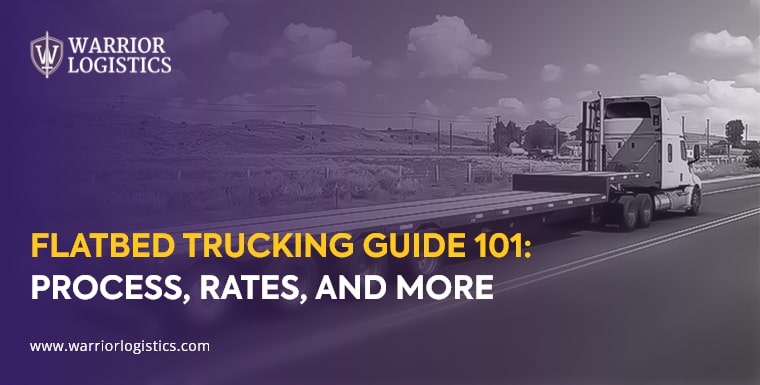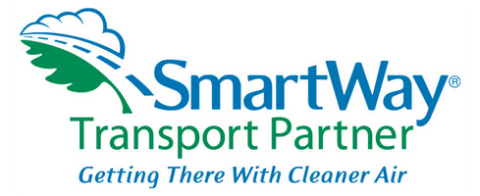Flatbed Trucking Guide 101: Process, Rates, and More
Flatbed trucking is an essential service in the transportation industry, offering a versatile and efficient way to move large, heavy, and uniquely shaped loads. Flatbed offers the flexibility and efficiency needed for these heavy-duty hauls. But how does it work? This guide breaks down the flatbed trucking process, rates, and what makes this transport method so reliable.
What Is Flatbed Trucking?
Flatbed trucking uses trailers without walls or roofs to move large, heavy, or awkwardly shaped freight. It’s the go-to freight solution when traditional trailers just won’t cut it. Construction materials, heavy machinery, and oversized loads all move better with flatbed hauling.
The open design makes loading and unloading fast, especially with cranes or forklifts. That saves time and minimizes handling risks. Flatbed trailers also offer a variety of configurations — from step decks to double drops — to suit different hauling needs.
This versatility makes them valuable across construction, oil and gas, agriculture, and manufacturing industries. Each type of trailer serves a specific purpose, ensuring cargo reaches its destination safely and efficiently.
The Flatbed Hauling Process
Understanding the step-by-step process helps you keep cargo moving safely and efficiently:
- Load Assessment: Evaluate the cargo’s size, shape, and weight before choosing the right trailer and tools.
- Route Planning: Plan ahead for low bridges, narrow roads, and permit requirements on longer or oversized hauls.
- Securing the Load: Use chains, straps, edge protectors, and tarps to keep freight tight and weather-safe.
- Compliance Checks: Check all local, state, and federal regulations before the truck hits the road.
- Transport and Delivery: Experienced flatbed truckers monitor the load throughout the journey until safe delivery.
Current Flatbed Truck Rates
Knowing what to expect with flatbed truck rates helps you plan smarter and avoid surprises. As we talk about 2025, average spot rates are around $2.44 – $2.53 per mile, and contract rates are closer to $3.02 per mile. Rates depend on fuel prices, demand, load type, and route distance.
Moreover, oversized or specialty freight often requires additional permits and equipment, which can raise costs. Businesses should also factor in detention fees, accessorial charges, and weather-related delays. Understanding the full rate structure avoids miscalculations and builds better budgeting strategies.
What Impacts Flatbed Truck Freight Rates?
Several key factors influence how much you’ll pay for flatbed transport:
- Distance: Longer routes usually cost more overall but may lower the per-mile rate.
- Load Size and Weight: Heavier or larger loads may require specialized trailers and extra handling.
- Fuel Prices: Rising diesel costs directly impact rates, especially for long-distance hauls.
- Market Demand: Seasonal spikes, like spring construction, drive up rates due to limited capacity.
- Route Complexity: Difficult terrain, low-clearance bridges, or urban areas may raise costs due to detours or escorts.
Why Choose Flatbed Transport?
Flatbed trucking stands out in several ways:
- Flexibility: Handles freight that’s too large, wide, or tall for standard trailers.
- Accessibility: Load from any side, saving time and reducing reliance on loading docks.
- Reduced Trips: Larger deck space means fewer shipments for large materials.
- Fast Turnaround: Open access and simple unloading keep things moving quickly.
Challenges of Flatbed Trucking
Every freight solution has its trade-offs. Here’s what you need to watch for:
- Weather Exposure: Without walls or a roof, freight faces rain, sun, and snow. Tarps are a must.
- Load Security: Improperly secured freight can shift or fall, creating risk on the road.
- Permit and Regulation Compliance: Oversized loads often require extra paperwork and planning to stay legal.
Flatbed Truckers: Skilled and Sharp
Flatbed drivers bring more than just muscle to the job. They know how to handle diverse cargo, secure it properly, and navigate tough routes. Training, focus, and experience separate top-tier flatbed truckers from the rest. It’s more than just driving — it’s problem-solving on the move.
In one of the blogs, we also wrote about questions to ask before you hire a flatbed trucking company. You must read it.
These professionals must also stay current on regulations, safety protocols, and equipment use. Their adaptability and decision-making play a huge role in keeping deliveries on schedule.
The Warrior Difference in Flatbed Transport
Flatbed hauling isn’t just another job. It’s where experience, attention to detail, and mindset matter. At Warrior Logistics, we bring skill and commitment to every haul — no shortcuts, no guesswork.
We train our drivers to think like warriors: alert, focused, and ready for any load.
We drive excellence in all we do every mile of the way.
Final Thoughts
Flatbed trucking gives you the freedom to move what others can’t. Whether steel beams, industrial machinery, or large equipment, flatbeds get the job done right. Understand the process, watch the rates, and work with a partner that values precision and performance. Choose flatbed transport that delivers on time, every time — the Warrior Way.
FAQS
1. What are the dimensions of popular flatbed trucks?
The dimensions of popular flatbed trucks typically range as follows:
- Standard flatbed: 8 feet wide by 24-48 feet long.
- 20-ton flatbed: Approximately 8 feet wide by 24-30 feet long.
- Lowboy flatbed: Around 8 feet wide by 25-40 feet long with a lower deck height for taller loads.
Dimensions can vary slightly depending on the specific truck model and manufacturer. Always check with the transportation provider for precise measurements.
2. How do I safely secure flatbed loads?
To safely secure flatbed loads, use proper tie-downs such as straps, chains, or ropes that are rated for the load’s weight. Ensure the load is evenly distributed across the flatbed, and use corner protectors to prevent damage to the cargo. Always check for proper tension on the tie-downs to avoid shifting during transport. Additionally, utilize load bars or blocking to secure the cargo in place and prevent movement. Regularly inspect the load during transport to ensure it’s still properly secured.
3. How do I get my flatbed operating authority?
To get flatbed operating authority, you need to obtain a Motor Carrier (MC) number and USDOT number from the Federal Motor Carrier Safety Administration (FMCSA) and register your business. You’ll then need to file a BOC-3 form with the FMCSA, obtain liability and cargo insurance, and pay the Heavy Vehicle Use Tax (HVUT).




